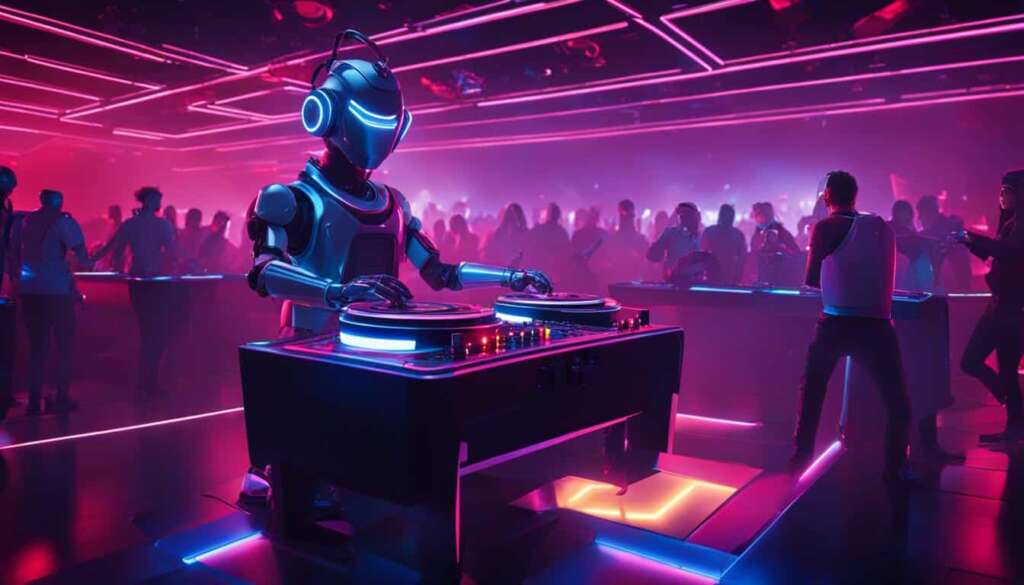Table of Contents
In 2023, artificial intelligence (AI) became a part of our daily lives, with generative AI tools being used by a large number of people, including teenagers and employees. These tools were initially used out of curiosity and for entertainment purposes, but have now become a valuable resource for studying, obtaining advice, and creating various forms of media. The use of AI in different fields, such as photography, music, advertising, and search engines, has grown rapidly.
However, with the increase in AI usage, concerns about copyright infringement and biased AI generators have emerged. To combat these issues, artists have started using a tactic called “data poisoning” to sabotage AI image generators. By subtly altering the pixels in images used for training AI models, artists can disrupt the algorithm’s ability to produce accurate and intended results. This form of creative retaliation aims to bring attention to the indiscriminate use of copyrighted images and biased AI models, ultimately seeking to hold big tech companies accountable and protect artists’ rights.
To understand how data poisoning affects AI image generators, let’s delve deeper into this technique and its consequences in the following sections.
Understanding Data Poisoning and its Effects on AI Image Generators
Data poisoning is a technique employed by artists to intentionally alter the pixels in images used to train AI models for image generation. By doing so, they aim to disrupt and introduce unpredictability into the generated images, exploiting the vulnerabilities of AI algorithms. This tactic serves as a means to draw attention to critical issues such as copyright infringement and biased AI models.
“Data poisoning allows artists to highlight the limitations and biases of AI image generators, shedding light on the need for more responsible and ethical AI development.”
When AI generators are trained on “poisoned” images, the altered dataset can lead the algorithm to misclassify images or produce unintended and distorted results. For instance, a simple prompt for a balloon against a blue sky may result in an AI-generated image of an egg or a watermelon. These disruptions can extend beyond individual images and affect the accuracy and performance of the AI model as a whole.
By employing data poisoning techniques, artists engage in a form of creative retaliation that aims to make users and developers of AI image generators aware of the inherent limitations and biases in these systems. It underscores the importance of responsible and ethical AI development practices that take into account the impact on copyright protection and the promotion of fair use.
Effects of Data Poisoning on AI Image Generation
Data poisoning disrupts the smooth functioning of AI image generators by introducing inconsistencies and unpredictability in the generated output. The altered image dataset can cause the AI algorithm to produce results that deviate from the intended prompts and expectations. These disruptions not only impact the immediate image generation process but also pose challenges for downstream applications that rely on the accuracy and reliability of AI-generated images.
“Data poisoning serves as an artistic tool to expose the flaws in AI image generation, urging developers to create more robust and unbiased systems.”
The effects of data poisoning can be seen at both the image and keyword level. Disrupted images can exhibit distorted shapes, colors, or objects that do not align with the given prompts. Additionally, the AI algorithm’s classification and recognition abilities may be compromised, leading to incorrect categorization or misinterpretation of keywords associated with the prompts.
All these disruptions contribute to a broader narrative surrounding the limitations and biases of AI image generators. Through data poisoning, artists aim to encourage developers to refine their models, address biases, and improve the accuracy and reliability of AI-generated images.
Impact of Data Poisoning on AI Image Generators
| Effects of Data Poisoning | Description |
|---|---|
| Disrupted Image Generation | Altered dataset leads to distorted and unexpected image outputs |
| Incorrect Classification | Data poisoning compromises the AI algorithm’s ability to accurately classify and recognize images |
| Misinterpreted Keywords | Keywords associated with prompts may result in unintended or unrelated image outputs |
| Increased Awareness | Data poisoning serves as a tool to highlight the limitations and biases of AI image generators |
Data poisoning plays a critical role in pushing for responsible and ethical AI development, urging developers and researchers to address the vulnerabilities and biases that exist within AI image generators. Artists continue to raise awareness by utilizing their creative and technical skills to challenge the status quo and encourage advancements towards more inclusive and unbiased AI technologies.
Combating Data Poisoning: Technological and Human Solutions
The fight against data poisoning requires a multi-faceted approach that combines technological fixes and human solutions. By addressing the source and usage of data, we can combat the harmful effects of data poisoning and ensure the integrity of AI image generators.
Technological Fixes
One essential technological fix is to prioritize the selection and monitoring of input data. By being more discerning about the sources of training data and ensuring compliance with usage rights, we can reduce the indiscriminate scraping of copyrighted images. This approach promotes responsible data handling and reduces the risk of unintentionally poisoning AI models.
Another effective technological solution is the implementation of ensemble modeling. This technique involves training multiple AI models on different subsets of data. By analyzing the outcomes generated by each model, we can detect and discard images that have been potentially poisoned. Ensemble modeling enhances the overall accuracy and reliability of AI image generators.
In addition, audits and test batteries should be employed to evaluate the accuracy of AI models. These assessments help identify any biases or anomalies in the training process and ensure transparency in the development of AI image generators. Regular monitoring and evaluation of AI systems can facilitate ongoing improvements and provide insights into the effectiveness of combating data poisoning.
Human Solutions
Addressing data poisoning also requires human-driven efforts to raise awareness and foster ethical considerations in AI image generation. There is a crucial need for education and understanding of the risks associated with data poisoning and biased AI models.
Responsible data usage and governance play a significant role in combating data poisoning. Artists, technologists, policymakers, and other stakeholders should collaborate to establish guidelines and best practices that prioritize ethical data harvesting. By promoting responsible data practices, we can mitigate the risks of data poisoning and create a more inclusive and equitable AI ecosystem.
Furthermore, fostering dialogue and collaboration between artists and AI developers can help strike a balance between creativity and responsible AI usage. Open communication channels allow artists to voice their concerns, provide input, and contribute to the development of AI image generators that respect their rights and artistic integrity.
The Evolution of AI and its Impact on Artists and Society
The evolution of AI is a fascinating phenomenon that has both captivated and concerned artists, shaping the way they create and navigate their artistic journeys. As AI technology advances, artists find themselves at the forefront of exploration, harnessing its potential while grappling with the implications it brings. One of the significant consequences of this evolving landscape is the emergence of data poisoning—a form of creative retaliation by artists seeking to protect their rights and challenge the indiscriminate use of copyrighted images. This form of resistance reflects the need for artists to reclaim control and ensure the ethical use of their creative work.
Simultaneously, the evolving impact of AI is seen through broader societal changes as traditional institutions slowly adapt to the changing times. For instance, the Vatican’s decision to allow blessings for same-sex couples demonstrates a willingness to embrace inclusivity and progress, highlighting the evolving stance of long-standing establishments in response to societal transformations. As AI continues to shape our world, it underscores the essentiality of responsible technological governance. It’s crucial that we strike a balance between AI’s potential benefits and the well-being and rights of individuals, fostering an inclusive and equitable future for all.
The intricate relationship between AI, artists, and society necessitates a gradual yet necessary progress towards a more ethical and inclusive future. As advancements in AI continue to unfold, it becomes increasingly vital for policymakers, technologists, and artists to collaborate and navigate the complexities of this evolving landscape, shaping the governance and implementation of AI technologies. By leveraging AI’s potential responsibly and ensuring inclusivity, we can harness the power of progress for the betterment of society as a whole.
FAQ
What is data poisoning in the context of AI image generation?
Data poisoning refers to the intentional alteration of pixels in images used to train AI models, resulting in disruption and unpredictability in the generated images. It is a tactic artists use to draw attention to issues like copyright infringement and biased AI models.
How does data poisoning affect AI image generators?
Data poisoning disrupts the algorithm’s ability to produce accurate and intended results. When AI generators are trained on “poisoned” images, they may learn to classify images incorrectly or produce unintended outcomes, such as generating an image of an egg instead of a red balloon against a blue sky.
What are some technological and human solutions to combat data poisoning?
Technological solutions include being more selective and mindful of the source and usage rights of input data, using ensemble modeling to detect and discard suspected poisoned images, and implementing audits and test batteries to ensure accuracy and transparency in the training process. On the human side, greater awareness of the risks and ethical considerations associated with AI image generation is needed, along with responsible data usage and governance and collaboration between artists, technologists, and policymakers.
How does the evolution of AI impact artists and society?
The evolution of AI technology presents both possibilities and concerns for artists. Artists resorting to data poisoning as a form of creative retaliation reflects the need to protect their rights and challenge the indiscriminate use of copyrighted images. The broader societal context in which AI operates, such as institutions like the church adapting to societal changes, emphasizes the importance of responsible technological governance and inclusivity. Progress in this area is essential for a more equitable and ethical future.













